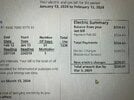A) Peak power spikes are bad for grid and add to Peak Load Calculation on my bill. Charging at the max for my vehicle, 32 amps creates spikes. So I want to bring this down.
B) Charging in colder temps requires battery heating, and I believe I read that 300 W is consumed by the car any time the car is “awake” which it is while charging. I’ve also observed the bacon strips on during cold charging times and understand that nothing good happens when the temp is below freezing. So charging under 15 C is likely going to result in power used to heat the battery, especially at higher SoC. This sounds like purely “wasted” energy and I’m thinking that the most efficient winter charging will occur in a warm garage with a friggin blanket over the vehicle.
The above two items conflict with each other and probably have some balance. If power spikes are zero concern, then maybe jamming the charge into the battery as fast as possible is always the way to go. I don’t know.
I think I’ve had my charge rate set at 20 amps recently. I get approximately the number of MPH of range added as the amps I’m using. So 20 MPH is added at 20 amps. That seems to be plenty for an overnight charge.
Now how about max charge? LFP batteries say to charge to 100% once per week, which I assume is for calibration as opposed to actual battery health. It seems to me that the last few percent are quite inefficient for many reasons. One is the time to charge, and probably higher battery temps required. The second is the lack of regen braking at a high SoC. Then there’s also some arguments that you should not leave your car with a high SoC for long periods of time. With all this, I’m keeping my max charge at 80-85% instead of the recommended 100%.
Here’s my after-midnight charge that I believe was 20 amps. You can see it is about double my other max usage for the day. 32 amps would be just that much worse.

I charged at 20 amps again the other night but my hourly usage from that day hasn’t uploaded yet. I will upload it tomorrow.
Considerations?
1) Charge daily and consume electricity and try to jam electrons into a near-full battery?
2) Charge less frequently because there are heating cycles and it takes less energy to get energy into a less full battery?
Savings typically = Being green, and I would like to do both.
B) Charging in colder temps requires battery heating, and I believe I read that 300 W is consumed by the car any time the car is “awake” which it is while charging. I’ve also observed the bacon strips on during cold charging times and understand that nothing good happens when the temp is below freezing. So charging under 15 C is likely going to result in power used to heat the battery, especially at higher SoC. This sounds like purely “wasted” energy and I’m thinking that the most efficient winter charging will occur in a warm garage with a friggin blanket over the vehicle.
The above two items conflict with each other and probably have some balance. If power spikes are zero concern, then maybe jamming the charge into the battery as fast as possible is always the way to go. I don’t know.
I think I’ve had my charge rate set at 20 amps recently. I get approximately the number of MPH of range added as the amps I’m using. So 20 MPH is added at 20 amps. That seems to be plenty for an overnight charge.
Now how about max charge? LFP batteries say to charge to 100% once per week, which I assume is for calibration as opposed to actual battery health. It seems to me that the last few percent are quite inefficient for many reasons. One is the time to charge, and probably higher battery temps required. The second is the lack of regen braking at a high SoC. Then there’s also some arguments that you should not leave your car with a high SoC for long periods of time. With all this, I’m keeping my max charge at 80-85% instead of the recommended 100%.
Here’s my after-midnight charge that I believe was 20 amps. You can see it is about double my other max usage for the day. 32 amps would be just that much worse.
I charged at 20 amps again the other night but my hourly usage from that day hasn’t uploaded yet. I will upload it tomorrow.
Considerations?
1) Charge daily and consume electricity and try to jam electrons into a near-full battery?
2) Charge less frequently because there are heating cycles and it takes less energy to get energy into a less full battery?
Savings typically = Being green, and I would like to do both.



